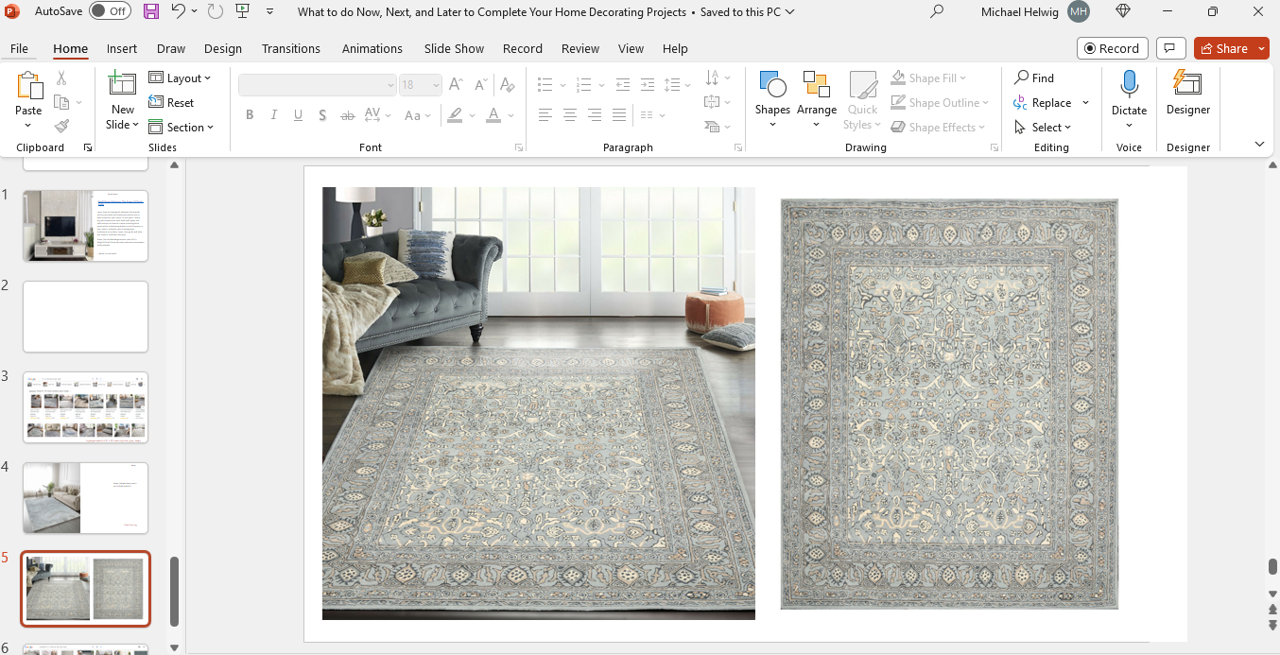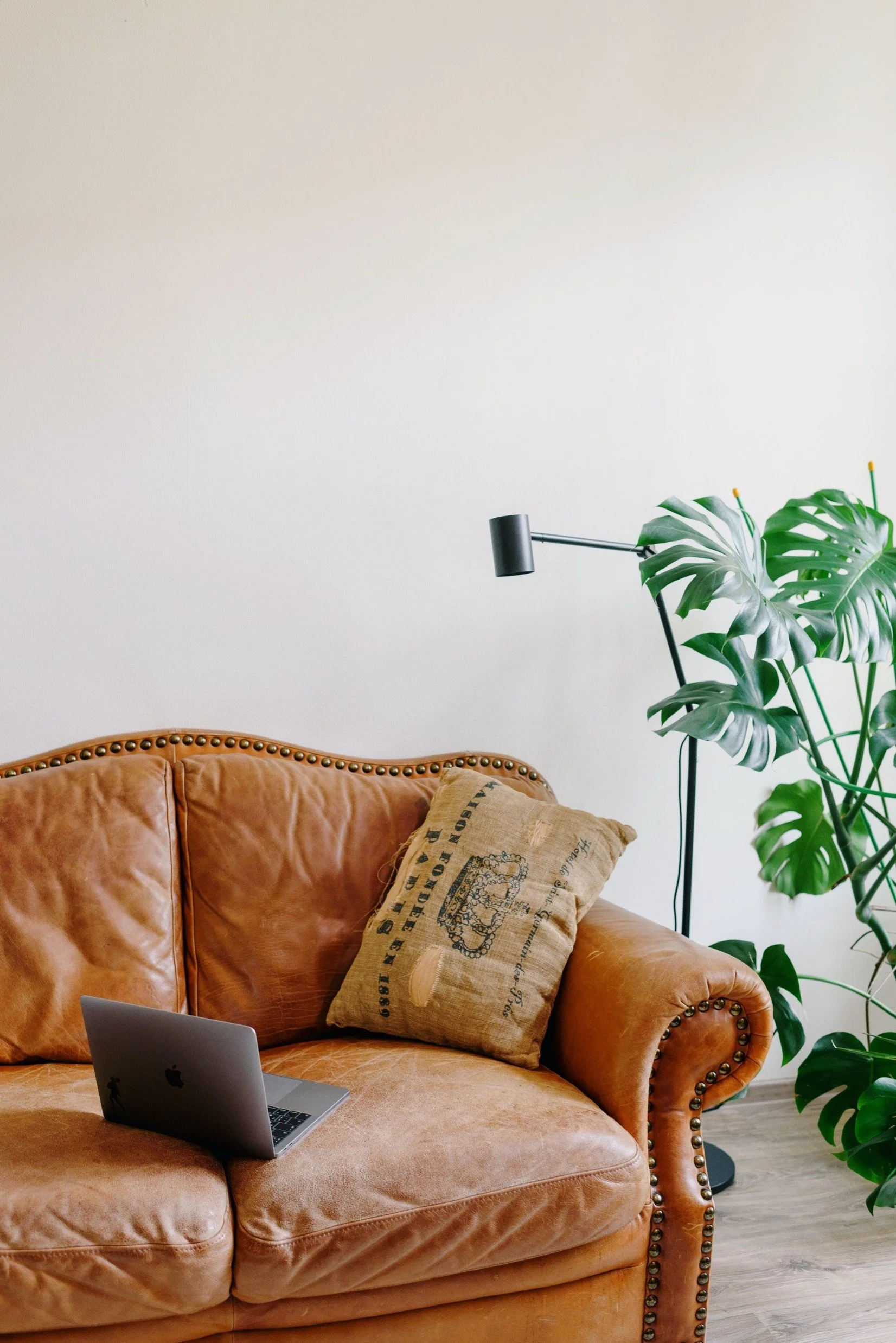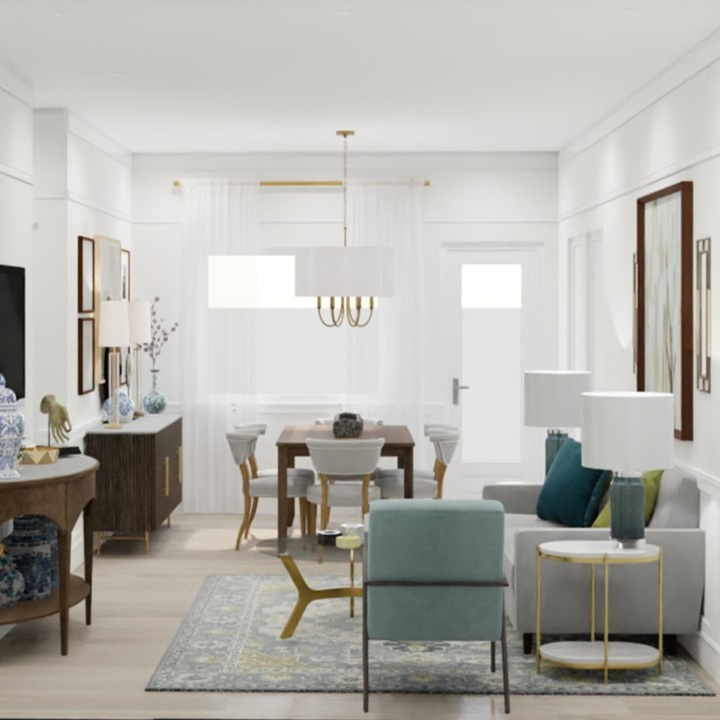Last week I outlined a 3-step process for redecorating or making over any room in your house.
I’m sticking with this same makeover theme this week, but instead of focusing on what to do now, next, and later, I want to focus on how to stay motivated while planning, doing, and -at times – adapting to the unexpected.
Yes indeed, the fun part is getting inspired and dreaming about what you want to do. That was what the “now” part of last week’s post was all about. (If you haven’t read that one yet, I encourage you to do that before reading this post.)
But what happens when the “shine wears off” your anticipated plans?
Like when you run into a snag, or something isn’t as easy as you hoped it would be.
Look, I’ve been there and I’m sure you have too.
If you’re like me, I get jazzed about some project and I think this is going to be a snap. I can knock this out in a day or two.
Famous last words, right?
That snappy day or two project turns into a week, month, or more because a special tool is needed and no store in your area has it, or the materials you need are backordered. (Remember the lumber shortage nightmare of 2020,21,22…ugh!)
Yep, I’ve had a few projects go on for WAY longer than I would tolerate from any contractor I’m paying to complete it.
#notproud but owing it!
When those unexpected setbacks happen, it can be hard to stay motivated. But, with these 5 simple and easy rules, I’ll show you how to keep your focus on your room makeover end goal so you can enjoy the spoils of your labor.
Ready? Let’s get into 5 simple & easy rules to stay motivated and focused on your room makeover.
1. Get Clear on what you want to accomplish.
This first step can be considered your fact-finding mission. It’s all about deciding what you want to do in your room.
Is this makeover a full room redo?
Are you only changing a few details like painting the walls and keeping everything else?
Do you want to add wallpaper or remove old wallpaper?
By knowing exactly what you want to do, you’ll have an easier time of moving into the planning process, which we’ll cover coming up in the next steps.
If you’re unsure of what you’d like to do, now is the best time to take a beat and gather your thoughts.
Get inspiration from places like magazines, home decorating and design blogs, TV shows, YouTube channels that focus on decorating, renovating, and DIY home projects.
EKATERINA BOLOVTSOVA
See what other people are doing and pay attention to their processes.
This is what I especially like about YouTubers.
They’ll often document their processes in a step-by-step way.
Some will also go deeper and explain what they could’ve done better or what they wished they would’ve done differently. This will be very helpful for you as you venture into your own project.
2. Make a List
This might sound trite, and I don’t mean it to, but list making is a great way to get what’s in your head down on paper.
So, last week I showed you a step-by-step method for getting your room makeover goals completed.
I’m going to assume that you have a project in mind and that you’ve gone through the initial stages.
For instance, you know what room you’re working in, you’ve gathered inspiration, and you’re now ready to start putting your ideas together.
So, a list is a great way to begin to map out what you need to do.
I’m partial to a brain dump list as my first draft.
This is the get it all out of your head and down on paper version.
That means there’s no order or schedule for the tasks on your list. The fine tuning comes later, so keep reading.
Your brain dump is all about the big picture idea(s) you want to accomplish.
Let’s say you’re making over a living room.
Your big picture idea will be things like:
This list can be long or short, it just needs to be a dump of all the things that you want to do.
The benefit of this brain dump list is that it clears the “big stuff” out of your brain so you can concentrate on what comes next, the fine tuning of your list.
This is where you revise and start to order your list into manageable steps.
Sticking with the same living room makeover project, your revised list might look something like this:
As you can see this is a more detailed list where I’ve taken the ideas from the brain dump list and then I’ve revised them into steps that are based on an order of what to do first, second third and so on.
Tip: Type your brain dump list and your revised step-by-step list in a digital format. I love using the notes app on my phone for things like this.
The reason is because you can move items around on your list and edit as you go.
You might find that you have time to do one quick task one day and another longer task another day, so being able to move tasks around is helpful.
All this talk about lists is great in theory, but what do the experts say?
In an NPR article, from 2009, called 10 Reasons Why We Love Making Lists, numbers 1 and 10 say it all:
1. Lists bring order to chaos. "People are attracted to lists because we live in an era of overstimulation, especially in terms of information," says David Wallechinsky, a co-author of the fabulous Book of Lists, first published in 1977 and followed by subsequent editions. "And lists help us in organizing what is otherwise overwhelming."
10. Lists can keep us from procrastinating. We put this one off until the end. Making a list enables us to get our heads around really big tasks — and helps us tackle the work one aspect at a time.
That brings me to number 3:
3. Do one thing on your list each day.
If your revised list is going to truly be your ticket to getting things done, you’ll need to work that list!
It can be helpful to break up your ordered tasks into more manageable chucks.
This is especially helpful if you’re a do-it-yourself type, but your schedule is tight.
Instead of willy nilly and go-for-it, take a little extra time and plan out the steps it will table you to do each task. And do this each day because you’ll have more time one day and maybe less time the next.
There’s no point in making a Herculean list and then failing to get it all crossed off. That will only discourage you. (I speak from experience…)
Instead, make a list of the logical steps that will get your ONE thing done.
Pexels
Let’s go back to your original goal of making over the living room and break down, the task of buying a new rug.
I like this option as a starting point because area rugs are great for defining a seating arrangement.
To begin picking an area rug, start with the size.
I prefer going larger rather than smaller, and I’ve found that an 8’ x 10’ rug works in most smaller rooms.
That size is good because you can usually get a generous size sofa and a couple of chairs to fit on the rug, and still have enough room for end tables and a cocktail table too.
Next, pick the colors.
If you have an idea for the kind of colors you’d like to include in the room, do a Google search for rugs with those colors.
Don’t get caught up in the “style” of rug or if it’s modern or traditional, just concentrate on the size and color(s).
For example, a google search of “8’ x 10’ area rug blue, gray, beige” turns up these results, when you select “search by image.”
You’ll see all kinds of styles, so you won’t limit your choices to only traditional or only modern.
In other words, keep your style options open just focus on what you like in the moment because you can refine your search later.
I like this rug, but I don’t love the pattern. It feels a little too modern to me. I can refine my search.
How about, transitional 8’ x 10’ area rug, blue, gray, beige.
These results yield a nice variation of choices that seem to fit the style direction I have in my mind better.
4. Find the inspiration anchor for your room makeover.
Let’s keep this simple and stick with the area rug for this example.
Just know that you can use art, wallpaper patterns, accent fabric patterns, or anything else you want as your inspo anchor though.
This rug is clicking with me, so I’ll pull it into PowerPoint file so I can add other things to it as I go.
I do this so I can see how things look together before I make any purchasing decisions.
As I mentioned before, a rug can help you make many more decisions about your room.
ebay
For example, this rug can help me pick the wall color, primary upholstery fabrics, accents like focal wall wallpaper, and secondary fabrics like chairs, throw pillows.
Tip: Have fun with this process and don’t be afraid to swap things in and out. You’re not making final decisions here; you’re seeing how things look and feel together. When I’m working on a mood board for my client projects, I’ll spend many hours and sometimes days swapping things in and out as my process unfolds.
By continuing to make one decision each day, you can easily have a mood board full of inspirational pictures in a few days that can give you a very solid style direction for your room.
ebay
5. Change your thoughts about your problem rooms.
This is the point where I get a little woo woo on you… But trust me, there’s some science behind it.
If you say, I hate my room, you create a block.
Pexels
It becomes hard to move past the feeling.
From Everyday Health: The Destructive Power of Hate
Hate, whether turned inward or out, creates a destructive state of mind that wreaks havoc with your physical health and emotional well-being. And like a hot coal, the sooner you rid yourself of this toxic emotion, the less damage it can do and the healthier and happier you’ll be.
Hate is a powerful word, and it can create a powerful block that can be hard to move past.
When I hear that a client hates their room, I immediately ask, what do you hate about it?
The answer is usually, everything!
To that, I counter with, it can’t be everything because you wouldn’t have reached out to me to help you. You would’ve reached out to the top Realtor in your town to list your house so you could move on to greener pastures, right?
So, in my experience, when someone hates their room, they usually have problems with flow:
Pexels
The room doesn’t jive with the rest of the house.
Furniture size and scale: it’s too big, too small, too uncomfortable.
They’re sick of what they have. They’ve had the same furniture forever and need a change.
Or, they’ve inherited pieces that they really don’t like but feel obligated to keep them because they once belonged to mom, mother-in-law, or spouse from their single days.
When pointed out, this usually corrects the I hate my room sentiment and flips it to I hate certain things about the room and other stuff.
If you just can’t shake the “I hate this room or this house” feeling then explore some very basic gratitude to re-set your feelings.
pexels
If you find it hard to be grateful for the room that you’re wanting to makeover, make it about:
the fact that you have a home that protects you from the elements,
you have electricity,
you have heat,
you have clean running water,
and all the municipality services to keep it clean and safe.
In other words, amp up your gratitude for your home as a whole and watch the creative block lift.
Specifically, gratitude, when practiced consistently, can change more than your feelings. It can improve your brain chemistry.
From the website, Brain balance, Gratitude, and the Brain: What is Happening?
“Gratitude causes synchronized activation in multiple brain regions and lights up parts of the brain’s reward pathways and the hypothalamus. In short, gratitude can boost neurotransmitter serotonin and activate the brain stem to produce dopamine." Dopamine is our brain's pleasure chemical. The more we think positive, grateful thoughts, the healthier and happier we feel.”
So, instead of focusing on hating your small, tricky, or awkward room, stop for a moment and reflect on the benefits of your home. I will guarantee that they’ll far outweigh the negatives.
Read Next
Transform Your Space: Expert Step-By-Step Home Makeover Guide
Create your dream space with my expert makeover guide. Follow the step-by-step process to transform your home easy as 1,2,3. Use this to unlock the true potential of your imagination and embark on your home makeover journey today.
Join the Fun!
If you enjoyed this post and you want to keep seeing my weekly blog, the best way to do that is to subscribe.
You can subscribe by downloading my 11 Secrets Only Designers Know to Make Your Space Rock. If you’re curious about how decorators and designers make a home look magazine ready, you’ll love taking a gander at these 11 secrets. You’ll learn how to style your room from the floor up and it will work for ANY space you have.
I write about small space design and decorating, sustainable furniture options, positive self care and a variety of do-it-yourself home décor.
I’d love to connect with you!
“Michael Helwig was top-notch, very professional and responsive to my needs. He allowed me time to explore ideas and try out a variety of combinations until we found the perfect fit. Michael provided detailed information and offered beautiful ideas to make my dream living room become a reality. The furniture he sourced has totally transformed my living room space. Everyone that has seen my new living room has one word, WOW! A special thank you to Michael for a wonderful experience.”
“Michael was very knowledgeable and guided us, with great patience and good humor, through the process of designing our dining room and helping us find the perfect sleeper sofa. He offered really helpful advice when we asked questions - which was often - but at no time did we ever feel pushed. He helped me when I felt like I couldn’t make one more decision. When my new furniture finally arrived I realized everything down to the pillows was perfect. I couldn’t be happier!”
Ksenia Chernaya
Michael is Principal designer and blogger at Michael Helwig Interiors in beautiful Buffalo, New York. Since 2011, he’s a space planning expert, offering online interior e-design services for folks living in small homes, or for those with awkward and tricky layouts. He’s a frequent expert contributor to many National media publications and news outlets on topics related to decorating, interior design, diy projects, and more. Michael happily shares his experience to help folks avoid expensive mistakes and decorating disappointments. You can follow him on Pinterest, Instagram and Facebook @interiorsmh.






















